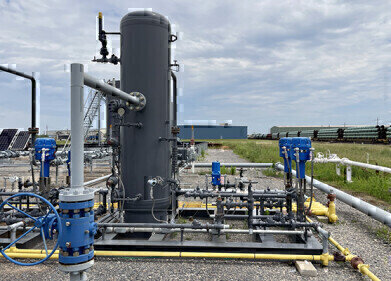Air Clean Up
Do Trees Make Urban Pollution Worse?
Jan 22 2016
One only has to glance at the news to hear how air quality in cities in general and London in particular is deteriorating. Health experts are constantly informing us that the inhalation of harmful contaminants such as particulate matter 2.5 (PM2.5) and nitrogen oxides (NOx) can have grave consequences on our bodies’ respiratory and coronary functions in the long term.
Since the vast majority of these contaminants in an urban setting come from vehicular emissions (often over 90%), it makes perfect sense to take any measures we can to improve air quality and reduce transport-related pollution. This most often involves introducing initiatives to try and decrease the number of cars on our cities’ roads, through congestion charges, bans on older vehicles and improved public transportation systems. However, trees have also been touted as providing some respite for our heavily-polluted airways… but could they be detrimental to air quality?
The Case for Trees
Trees have long been known to improve environmental conditions. Not only do they provide our most valuable resource – oxygen – while removing one of our most harmful pollutants (at least in climate change terms) – carbon dioxide, they also can work to physically and chemically eliminate other contaminants in the air.
Furthermore, a study from the University of Leicester last year found that trees in the city centre were able to reduce pollution at pedestrian height by as much as 7%. They achieved this by interrupting air flow, thereby causing turbulence in the air, which is vital to dispersing contaminants effectively.
Finally, trees are also instrumental in preventing excessive noise pollution and in having a direct or indirect effect on the morale of city dwellers. An oasis of green vegetation in an otherwise grey concrete jungle can provide stress relief for those whose daily routine is dictated by the relentlessly busy pace of city life.
The Case against Trees
However, this only tells one side of the story. When trees are planted in improper locations, they can actually increase pollution levels by cutting off airflow. This means that the wind cannot do its job of scattering contaminants effectively, instead trapping them in pollution hotspots which can then prove to be very damaging to passers-by and animals in the area.
Indeed, in an extreme scenario, a tree-lined avenue with an extended canopy could essentially provide a barrier to the free movement of the contaminants, meaning that they can significantly disrupt the air quality in these zones.
The report Improving local air quality in cities: to tree or not to tree? conducted by a Belgian research group provides a more comprehensive comparison of the pros and cons of trees in an urban setting for those interested.
The Verdict
While it should not be denied that trees can certainly improve air quality in cities, it should also not be taken for granted that they always do so. When planning out where to plant trees, a number of factors should be considered, including:
- The type of tree being planted
- Wind direction
- The geography of the street
- Where pollutants (vehicles) and receptors (humans and animals) are likely to be located
Therefore, introducing trees into an urban environment is a great idea – it’s just one that needs to be thought through clearly before implementation.
Events
Apr 22 2024 Hannover, Germany
Apr 23 2024 Kuala Lumpur, Malaysia
Apr 24 2024 Sao Paulo, Brasil
May 05 2024 Seville, Spain
May 13 2024 Munich, Germany














